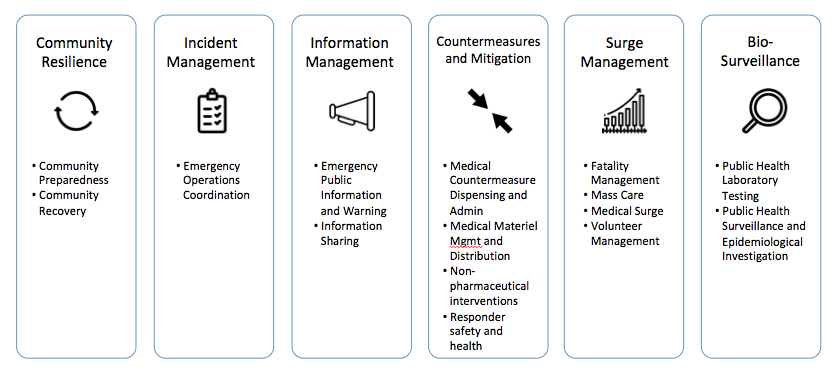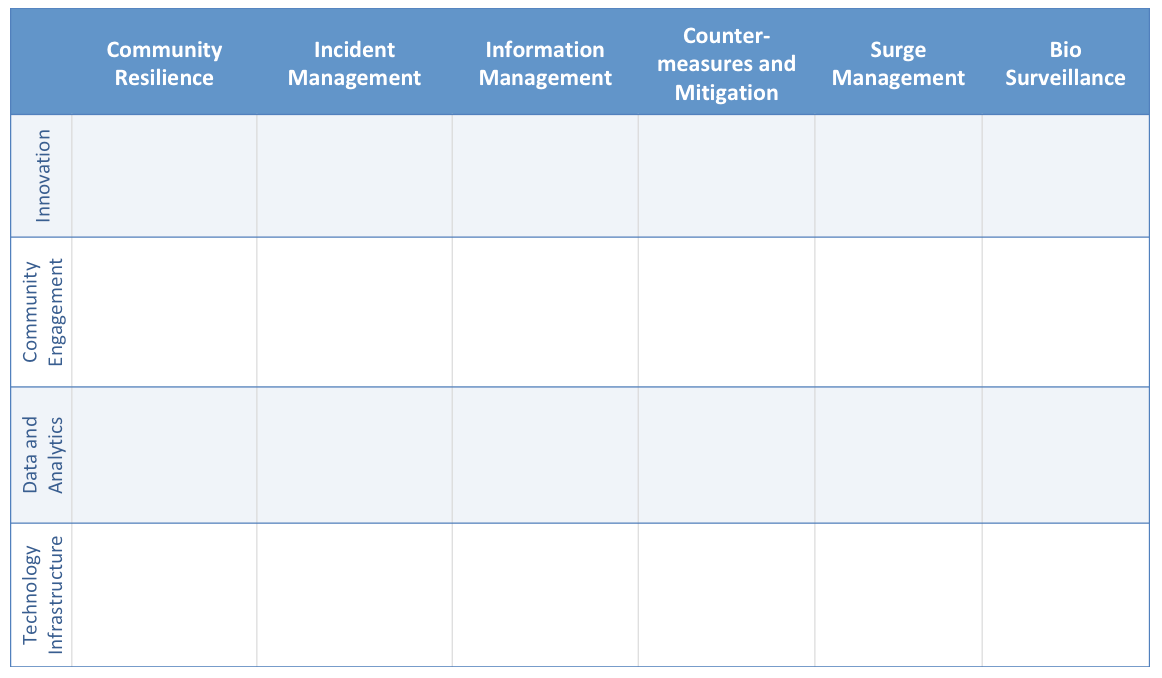Collaboration opportunities between tech and cities during COVID-19 pandemic
The coronavirus COVID-19 pandemic has disrupted cities and communities worldwide. From the loss of lives and interruption of essential day-to-day services, to disruption of the global economy, no one person, organization, or country is spared.
Cities have borne the initial burden of the COVID-19 outbreak. As the number of infections and deaths surge, governments are turning to technology and innovative approaches for help. For example, eighteen countries around the world are using mobile phone tracking and contact tracing methods.
Innovative smart city technologies such as the Internet of Things (IoT), artificial intelligence (AI), 5G, open data, and analytics, offer the potential for cities to respond to the pandemic more effectively. Existing response activities can be delivered faster, with better quality and accuracy, and with less cost. Furthermore, cities and public health organizations can build on these advanced capabilities to create new services and respond in ways that were not possible before.
However, current efforts to engage the innovation communities are reactive, piecemeal, and have limited effectiveness. Some problems get a lot of attention while others go unaddressed. Many technology companies lack context of how cities and public health systems address health emergencies, and offer solutions that are not relevant. Still other solutions have limited effectiveness because they lack community support or prerequisite infrastructure.
Smart Cities-Public Health Emergency Collaboration framework
Based on our observations and experiences, we’ve written a white paper describing a Smart Cities COVID-19 Public Health Emergency collaboration framework. We define a structured approach to broadly consider and maximize collaboration opportunities between the smart city innovation community and municipalities for the COVID-19 outbreak. It integrates the CDC Public Health Emergency and Response Capabilitiesstandards with components of a smart city innovation ecosystem. The CDC defined capability standards are organized into six domains (Figure One). Each domain contains a defined set of capabilities. Each capability has a set of standardized activities associated with it.

Figure One. CDC National Public Health Emergency Preparedness and Response Capabilities
The Smart Cities COVID-19 and Public Health Emergency Collaboration framework is shown in Figure Two. Each intersection in the framework represents a collaboration point where the smart city’s innovation ecosystem and digital capabilities can be used to augment the municipalities’ public health emergency response needs.
This Smart Cities COVID-19 framework broadly captures and proactively maximizes the full range of collaboration opportunities between cities, public health systems, and the technology community for a public health emergency. The more boxes in the framework that can be populated, the more effective the overall response is likely to be.

Figure Two. The Smart Cities-Public Health Emergency Collaboration framework.
The framework in action
There is no limit to the number of collaboration initiatives possible for each square. Some collaboration initiatives may span multiple CDC capability domains, and some initiatives may span multiple smart city layers.
We share three examples of responses, as reported in the media, and where they fit within this framework. Additional details about the framework, including other examples is in the white paper.
Example One. Infected Individual Tracing
Collaboration Point: Bio-Surveillance (Public Health Surveillance and Epidemiological Investigation) and Data and Analytics Layer
A number of governments are using the data from mobile phones to track infected individuals, to see where they went, and whom they may have come into contact with. This information is then used to identify those who have potentially been infected, how many people were infected, and when they may have been infected.
Example Two. COVID-19 Screening Website
Collaboration Point: Countermeasures and Mitigation (Non-pharmaceutical interventions) and Community Engagement
A life sciences company has created a website that screens for COVID-19, and directs people to local testing locations. This effort supports California’s community based testing program, and is available in four counties.
Example Three. Community Broadband
Collaboration Point: Countermeasures and Mitigation (Non-pharmaceutical interventions) and Technology Infrastructure
A national telecommunications company is providing the communities that it operates in with access to broadband Internet service. This includes lifting data caps for its existing customers, and access to its nationwide network of hotspots to non-customers.
In addition, new customers are given two months of free service. This supports the community, businesses, and others affected by “shelter in place” directives intended to reduce community spread of COVID-19.
This framework is most effective when:
- It is used as a starting point for collaboration. Cities and health systems bring domain knowledge, while technology companies bring the digital expertise.
- Cities and health systems use it to plot their existing responses and then identify their capability gaps and needs. They must articulate those gaps and needs to the technology companies.
- Technology companies align their offers to the CDC specified capabilities and activities. It may be necessary to partner to offer an “end to end” solution.
- Everyone thinks beyond individual “squares”. The squares are a starting point. Some needs cross multiple capability domains and require a combination of technology, community engagement, and data.
- Collaboration opportunities are separated into two categories. One for tactical immediate responses, and a separate set for mid-term, longer efforts.
Next steps
With an initial understanding of the framework, the following are recommended next steps for municipalities, communities and public health systems:
- Review the framework and understand each of the fifteen capabilities (Figure One) and the associated activities corresponding to each capability.
- Evaluate the current state of the community’s response capabilities and activities. Identify the level of activities, as well as gaps in your capabilities.
- Map the gaps and wants into the framework. This becomes a “challenge” list that can be used to solicit innovative ideas and solutions.
- Invite the technology and innovation community to review this list. Host various brainstorming and ideation sessions. Create open challenges and invite the community to participate.
For technology and innovative solutions providers:
- Review and understand what each of the fifteen capabilities are, and what activities they enable.
- Review the framework, and identify those areas of current and future potential opportunity for your solution or capabilities. It may be necessary to establish partnerships with other technology companies in order to provide an integrated offering.
- Using this framework as a guide, discuss with public health and emergency operations and response planners their capabilities, gaps, and areas of potential collaboration and opportunity.
This article was written by Benson Chan, a Senior Partner at Strategy of Things, a transformation management consultancy helping companies innovate for a hyperconnected world. He has over 25 years of scaling innovative businesses and bringing innovations to market for Fortune 500 and start-up companies. Originally the article was published here.
